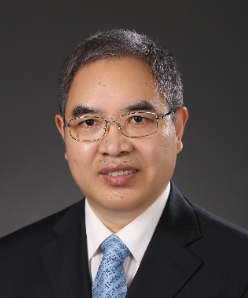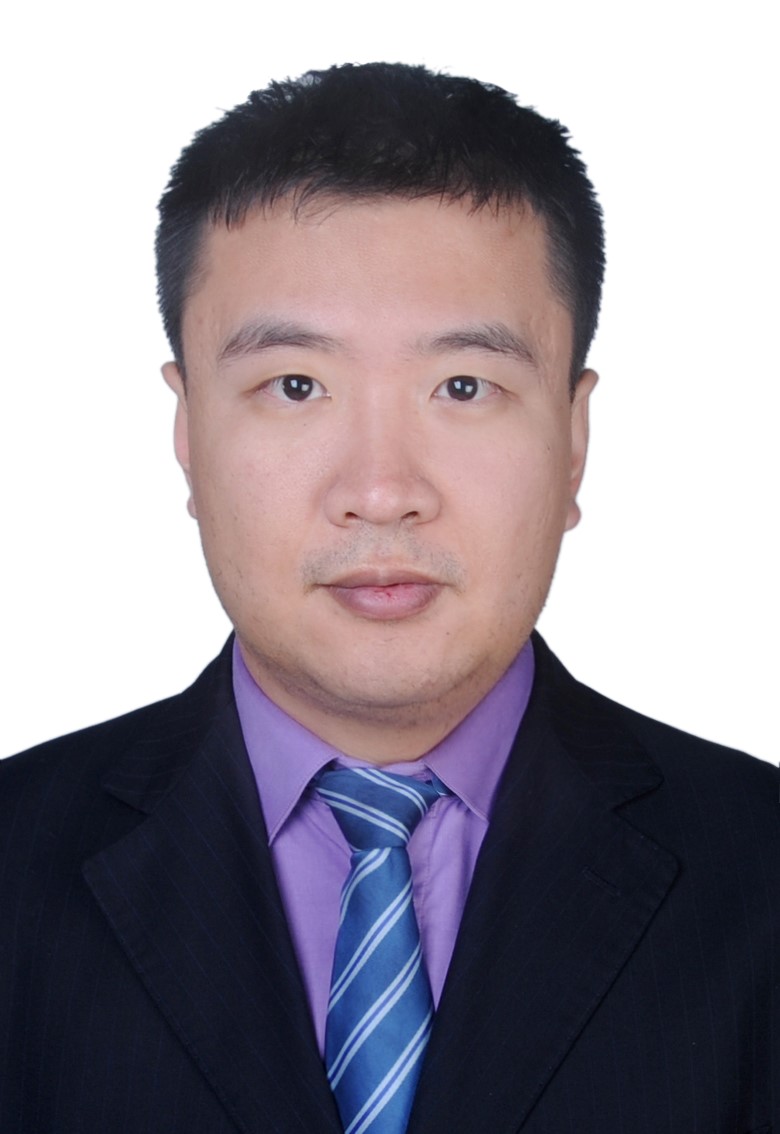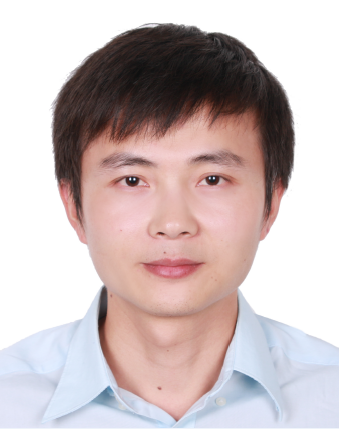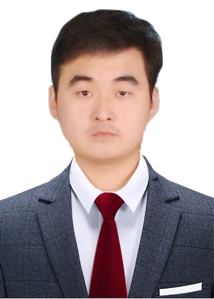
| Prof. Pingyi Fan, IET Fellow, Tsinghua University, China Biography: Dr. Pingyi Fan is a professor and the director of open source data recognition innovation center, Department of Electronic Engineering, Tsinghua University. He received Ph.D. degree at the Department of Electronic Engineering of Tsinghua University in 1994. From 1997 to 1999, he visited the Hong Kong University of Science and Technology and the University of Delaware in the United States. He also visited many universities and research institutes in the United States, Europe, Japan, Hong Kong and Singapore. He has obtained many research grants, including national 973 Project, 863 Project, mobile special project and the key R&D program, national natural funds and international cooperation projects. He has published more than 600 papers (ORCID) including 171 IEEE journals and more than 10 ESI highly cited papers as well as 4 academic books. He also applied for more than 40 national invention patents, 7 international patents. He won 10 best paper awards of IEEE international conferences, including IEEE ICCCS2023 and 2024, ICC2020 and Globecom 2014, and received the best paper award of IEEE TAOS Technical Committee in 2020, the excellent editor award of IEEE TWC (2009), the most popular scholar award 2023 of AEIC, the second natural Prize of CIC (2023) and several international innovation exhibition medals, i.e. Gold Medal at the Russian Invention Exhibition-2024, Silver Medal at Geneva Invention Exhibition-2023, and Silver Medal at Paris Invention Exhibition-2023 etc. and served as the editorial board member of several Journals, including IEEE and MDPI. He is a Fellow of IET and IET Fellowship international Assessor. He is currently an Associate Editor of IEEE Transactions on Cognitive Communications and Networking (TCCN), the editorial board member of Open Journal of Mathematical Sciences and IAES international journal of artificial intelligence, the deputy director of China Information Theory society, the Co-chair of China's 6G-ANA TG4, and the chairman of Network and Communication Technology Committee of IEEE ChinaSIP. His current research interests are in 6G wireless communication network and machine learning, semantic information theory and generalized information theory, big data processing theory, intelligent network and system detection, etc. Title:AI and Information Theory--- Problems and challenges encountered in theory and practice Abstract:In the era of AI, AI elements have become the standard in all fields of our living, and the model development of AI for Everything has shown a rapid development momentum. This report mainly explains the core value of information theory in the construction and training stage of AI models in the AI era through some examples, and also explains how AI can be used to develop computational theories of computational information theory --- develop information theory, and expounds the problems and challenges encountered in the development of information theory itself from a deep level. The corresponding point of view can be summarized as follows: perhaps AI provides more abundant opportunities for the discipline of information theory, and can go beyond the scope of Shannon's information theory and enter a new stage. Does an AI model or algorithm also need some kinds of courage and luck as Huffman coding for source compression in information theory? Where is the way forward for AI models? Where are the boundaries of AI? Perhaps the biggest challenges!! |
| Prof. Weigang Hou, Chongqing University of Posts and Telecommunications, China Biography: Weigang Hou was born in China in 1984. He received the Master of Engineering degree in communication and information system from Northeastern University, Shenyang, China in 2009, and the Ph.D. degree from the same university in Oct. 2013. In 2011, he won Chinese Academic newcomer award. In 2012, he was an associate researcher with the computer science from City University of Hong Kong. From 2013 to 2018, he was an associate professor with the school of computer science and engineering in Northeastern University, Shenyang, China. From 2019, he was the full professor, Ph. D supervisor and co-tutor of Postdoctoral/workstation in Chongqing University of Posts and Telecommunications. He is also the member of IEEE ComSoc and OSA, review editor on the Editorial Board of Optical Communications and Networks (specialty section of Frontiers in Communications and Networks), and Young academic editor of international journal DCN. In 2019, he won the award of top-notch young talent in Chongqing Talent Program. In 2022, he won the National Funding of Excellent Youth Project. His interests are in the area of optical network on chip with new materials. His research programs span the interest areas above. Until now, he has served as the session chair, program vice-chair and program chair of IEEE international conferences such as Globecom, and the reviewer for a number of IEEE journals, including IEEE Journal of Lightwave Technology (JLT), IEEE Journal of Optical Communications and Networking (JOCN), and IEEE Communication Magazine (ComMag), etc. He has held over 120 publications, and they span IEEE Magazine, Trans, Journals and some famous conferences, including IEEE ComMag, IEEE Netw, IEEE JLT, IEEE JOCN, OFC, Globecom and ICC, etc. He also has been an Invited Speaker at about 20 IEEE conferences. Since 2013, he has won a number of international scientific honors and awards, including the candidate of the best researcher award at the world top scientist awards, the best paper during 2018 from IEEE Systems Journal, the best paper award of IEEE conferences CITS and Qshine, the post-deadline paper of IEEE conference ICOCN, the outstanding reviewer of 3 international journals, and 8 highly-cited paper, etc. Title: Research on Optical Data Center Networks: Achievements and Prospects Abstract:As a critical information infrastructures for Chinese “East Data, West Computing” and “East Inference, West Training” national key projects, the optical data center network can provide efficient communication and computing services via cloud-network integration. The aggregated terminal data is transmitted to edge servers via fiber links, or relayed hop-by-hop through optical cross-connects to the remote cloud, thus ensuring the determinism of optical pipelines from end to edge, from end to cloud, and interconnected clouds. Moreover, this approach not only reduces the high latency of centralized cloud computing but also facilitates full process control of the cloud. It plays an indispensable and crucial role in application fields such as CPS. This report firstly introduces the innovative achievements made by the applicant and his team in the past 20 years, which have led both international academia and domestic industry from three aspects: intrinsic co-optimization mechanism of communication and computation, optimization technology of optical transmission between data centers, and optimization technology of optical computing within data centers. This report also highlights the application of the above achievements in national key engineering construction and top enterprises, along with their extensive international influence. Subsequently, this report will introduce how to achieve the evolution of endogenous synergy from “communication+computing” to “sensing+communication+computing”, the optimization evolution of optical transmission from algorithms to cross-layer designs, and the optimization evolution of optical computing from inference to “inference+training” in the future, under the funding of the Excellent Young Scientist Project of the National Natural Science Foundation of China (NSFC). |
| Prof. Bin Liao, Shenzhen University, China Biography: Liao Bin, Professor, graduate supervisor, doctoral supervisor, Deputy Director of Guangdong Key Laboratory of Intelligent Information Processing. He received his Bachelor's degree in Electronic Information Engineering and Master's degree in Information and Information Processing from Xidian University in 2006 and 2009 respectively, and his Doctor's degree from Department of Electrical and Electronic Engineering, University of Hong Kong in 2013. Mainly engaged in array signal processing, radar signal processing, wireless communication, synaesthesia integration and other research. He was selected as one of the top 2% of global top scientists, one of the "Lifetime Science Influence List", winner of the "Sino-Europe Talent Project" of the National Natural Science Foundation of China and the European Commission, Young Top Talent in Science and Technology Innovation of the "Guangdong Special Support Program", "Liyuan Youqing", an outstanding young teacher of Shenzhen University, and a Class B of Shenzhen Overseas High-level Talents (Peacock Program), Nanshan District "pilot talent" category B winner. He won the second Prize of Natural Science of the Ministry of Education, the Best paper Award of the 21st (Beijing) and 22nd (London) IEEE International Conference on Digital Signal Processing, the Outstanding Graduate of Shaanxi Province, the Outstanding Graduate of Xidian University, the special prize of outstanding Master's degree thesis, and the CASC first-class Scholarship of China Aerospace Science and Technology Corporation. He has presided over more than 10 longitudinal research projects, including 4 projects of the National Natural Science Foundation. He has published more than 150 papers in authoritative international journals and conferences. He is currently a Senior member of IEEE, a member of the IEEE Sensor Array and Multichannel Signal Processing (SAM) Technical Committee, and serves on IEEE Transactions on Aerospace and Electronic Systems. Multidimensional Systems and Signal Processing (Springer), Associate Editor of IET Signal Processing and other journals. Title:Beamforming Design for Dual-Function Radar-Communication System Abstract:Radar and communications are fundamentally important applications of the electromagnetic (EM) spectrum. With the rapidly increasing demand for enhanced radar sensing capabilities and higher communication data rates, there is a pressing need for greater bandwidth to support not only radar and communication but also a variety of other services. As a result, dual-function radar-communication (DFRC) systems—also known as RadCom, JCAS, and ISAC—have emerged as key solutions that share hardware platforms and frequency bands, guiding advancements in active sensing and wireless technologies. In both radar and communication systems, beamforming is a critical signal processing technique that directs and enhances the transmission and reception of signals. Therefore, this technique is also essential for optimizing performance of DFRC systems, facilitating more effective target detection, improving signal quality, increasing capacity, and enhancing user experiences. In this context, we will discuss recent advances in beamforming design for DFRC systems during this talk. |
| Dr. Congduan Li, Sun Yat-sen University, China Biography: Congduan Li (Senior Member, IEEE) received the B.S. degree from the University of Science and Technology Beijing, China, in 2008, the M.S. degree from Northern Arizona University, AZ, USA, in 2011, and the Ph.D. degree from Drexel University, PA, USA, in 2015, respectively, all in Electrical Engineering. From October 2015 to August 2018, he was a Post-Doctoral Research Fellow with the Institute of Network Coding, The Chinese University of Hong Kong and with the Department of Computer Science, City University of Hong Kong. He is currently an Associate Professor with the School of Electronics and Communication Engineering, Sun Yat-sen University, China. His research interests lie in the broad areas related with networks, such as coding, security, wireless, storage, and caching. |



